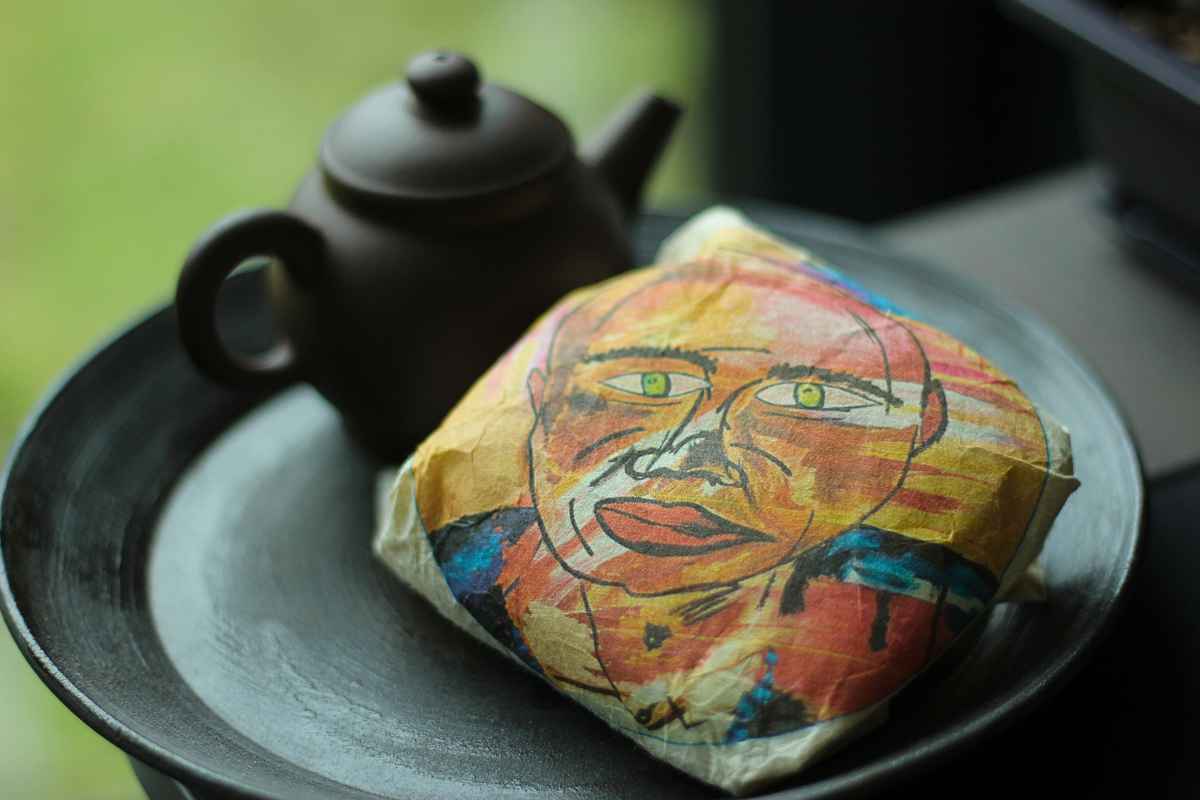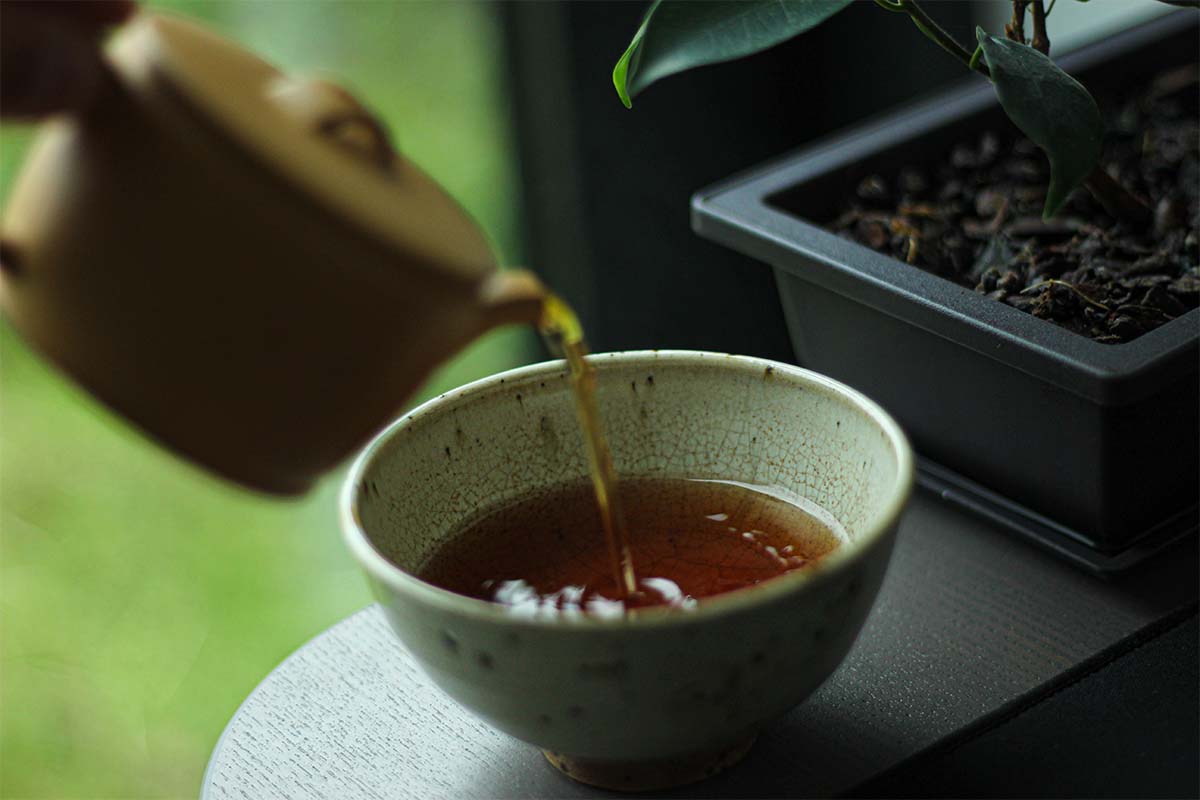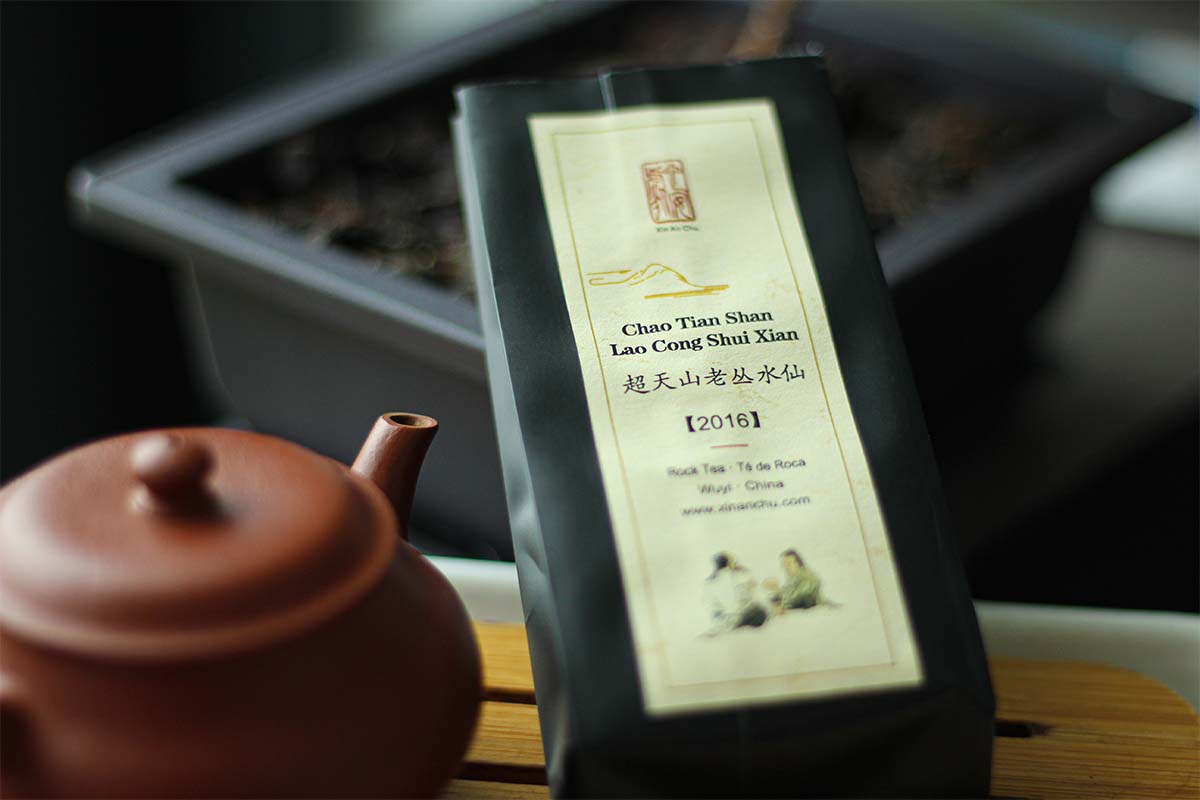Back in February, Tea Joint prepared a sample package for me. Unfortunately, the world is in lockdown so I only received my package two weeks ago. The package contained a lot of different samples so I’m likely to encounter a wide variety of flavours. For today’s session, I picked a tea I have already drunk before, just not from their store. Todays tea is their Taiwanese GABA Grape Oolong.
Have you considered subscribing to Tea Adventures? You can enter your email address in the sidebar and get updates whenever I publish a new article. You never have to miss an article again by joining our mailing list.
Taiwanese GABA Grape Oolong
The Taiwanese GABA Grape Oolong is a tea from Ali Shan mountain and was grown at an altitude of around 1,000m. The fact that this is a GABA tea means that oxidation took place in an airless chamber to which nitrogen was added. This process allows for the leaves to have a higher level of Gamma Amino Butyric Acid (GABA). This amino acid plays an important role in the central nervous system. I don’t drink that many oolong teas anymore, but I’m always keen to try a GABA oolong!
This is a clear example of a ball-rolled oolong tea. The colour of the dry leaves is a dark and slightly faded green. The aroma consists of dark notes of roasted cherries.
I’m still getting notes of roasted cherries in combination with fresh apples when the leaves are wet. Once the leaves have completely unfurled, my gaiwan is almost overflowing! Large leaves and some stalks. The leaves have a dark colour with a reddish hue.
Tea Tasting
- Water 90°C
- 5g for 100ml porcelain gaiwan
- 1 rinse
- 6 infusions
Infusion 1 (15 sec): I’m immediately getting a fresh sensation when taking a sip and it’s really salivating! The flavours are subtle, but I expected this because the leaves have not fully opened yet. Soft notes of roasted cherries and a a hint of sour/green apples if you really pay attention.
Infusion 2 (20 sec): before drinking, it seems that the liquor is a lot darker and the leaves have opened in the gaiwan. The roasted notes have moved more to the background and the fresh and brighter notes of the apples are more prominent. You can definitely feel the darker notes beneath the surface.
Infusion 3 (25 sec): now the different flavours are more or less on the same level and it’s still enjoyable to drink. I’m getting fresher notes at the start and the darker cherry notes slowly follow. These continue well into the aftertaste.
Infusion 4 (35 sec): the fresh and sour apples have almost disappeared and the roasted notes have changed into heavily roasted and almost burned notes. These change into deep, dark and sweet cherries in the aftertaste.
Infusion 5 (45 sec): the liquor is not that thick, but it flows easily. No more fresh notes and it’s mainly warm and roasted cherries. Fairly long aftertaste.
Infusion 6 (long): I feel the flavours are fading, but it’s still good. No big changes, so still roasted cherries. The thing that struck me was the aftertaste. It was still very strong, despite being the sixth infusion.
Don’t know where to buy tea online? I made a page on the website with over 200 online shops and I keep updating it regularly. You can check it over here.
Conclusion
This is the first tea from Tea Joint I tried and it was a good one. I mainly got a combination of green/sour apples and dark roasted notes of cherries. It was interesting to experience how these elements played a game of hide and seek to show up during different infusions and always in a different intensity. Most infusions also had a pretty long-lasting aftertaste, which is always a pleasant feeling.
If you want to try this cherry/apple tea for yourself, you can buy it over here.




